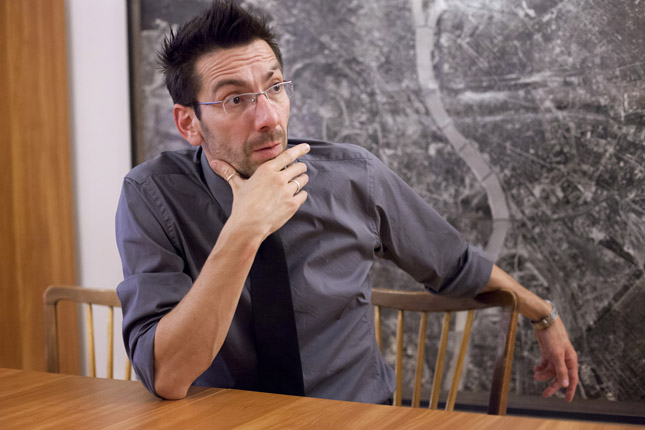A capital plan: Budapest chief architect talks development funding

From the Budapest Business Journal print edition: The long-term development strategy of Budapest, valid until 2030, was approved by the city council last year. The first mid-term phase of the strategy, containing the guidelines for the next seven years, will be approved this month. The real question concerning both the long- and mid-term plans, however, is where funding for their realization will come from. BBJ asked Sándor Finta, Chief Architect of Budapest.
BBJ: Your position is virtually unprecedented in the Anglo-American world. You are one of the leading officers of Hungary’s capital city, responsible for both the development plan and the regulation plan of Budapest. Thus you are both a man of vision and a chief official at the municipality. Isn’t there an inherent contradiction in that?
Finta: My position, which was created in 1990, is rooted in the French tradition. I am an architect and an urban planner by profession, which involves a rather complex set of tasks. I have to find equilibrium among very diverse competences including civil engineering, social policy, and property management. Being also a city official makes things even more complex; for example, the preparation of municipal statutes is among my responsibilities. The long-term development strategy of Budapest as well as its first mid-term implementation, the latter being currently approved by the city council, fit into a so-called planning hierarchy.
Both the general development plan and the regulation plan for the whole of Budapest are theoretically mandatory for every district of the capital city. In practice, however, the districts – which enjoy substantial financial and political autonomy – often disregard the regulatory intentions of the Budapest municipality.
How about the funding provided for the realization of the development plans?
In the annual budget of Budapest, the budget dedicated to development has always been meager. The local (district) governments have always received more central funding than the municipal government of the whole city. The distribution of funding has become even more disproportionate in recent years. It is thus not surprising that the largest development projects of the municipality are all related to either transportation or the environment: those are the two fields for which it is possible to mobilize funding from the Hungarian government and the EU, in addition to the resources of the Budapest municipality itself.
What about the creation and development of local centers within the city?
The capital city possesses neither the funding nor the legal authority to develop those. From the point of view of property management, these hubs belong to the district governments. In order to draw private investment into the development of local centers, it would be necessary to develop infrastructure, including public transportation – especially tram and subway lines. The Chief Architect has no authoritative means in his or her hands by to influence that process. All we can do is find the points of synergy involving district governments, the national government, civic organizations, and private investors.
Could you give us some examples?
A good example for cooperation between the municipal government and certain district governments is the so-called Nyugati Grund in the 6th district. This is a brownfield area behind Nyugati Railway Station, ready for revitalization.
Formerly part of the railway station and now out of use, the area is currently managed by the Hungarian National Funds Management; it lies near important sites such as the Museum of Fine Arts, City Park, and the planned new museum quarter. It is thus desirable to develop it into a public park first, to improve the area, and prepare the way for further utilization. The city of Budapest plays an important coordinative role in the conversion of that brownfield spot; in that particular case, the cooperation of the Budapest municipality with the 6th district local government and its mayor Zsófia Hassay is exemplary.
As far as the cooperation between the Budapest municipality and civic organizations is concerned, the revitalization of vacant stores can be cited as a good example. The city regards it as its task to call the attention of the individual districts to the fact that the condition of the historic building stock controlled or owned by the districts needs improvement: for instance, the multitude of vacant stores create a bad impression, and the districts should design novel policies for their utilization.
With the support of the city of Budapest, the Center for Contemporary Architecture (KÉK) runs the ‘Rögtön jövök’ (‘Back in a Minute’) project, the purpose of which is to map out vacant stores and abandoned buildings of former public institutions – e. g. schools or hospital buildings – in the city; another such project is ‘Lakatlan’ (‘Vacant’), which aims to map out all types of vacant real estate, including residential, industrial and commercial properties. As far as these locations are concerned, the task of the Budapest municipality is to convince the district governments that it is worth offering up such vacant properties to, for example, artists who can open their studios there.
At the beginning, the district governments usually resist the idea, arguing that in this way the stock of their rentable stores will decrease; in reality, however, the vacant buildings and stores represent dead capital, i.e. property that is very difficult to rent out. From the point of view of positive sentiment it is much better if someone at least works actively in a formerly vacant store, and passers-by can see some life inside such a ground-floor unit.
As far as private capital is concerned, we can rely on it mostly in areas where there are already signs of recuperation: for example, in historic districts undergoing revitalization. Private capital can join the strategic process in a number of ways. The historic center of the city must be preserved at any cost. Private capital can find the best opportunities in the old historic districts, ideally in the form of so-called temporary utilization. To give an example, former residential buildings can be converted into boutique hotels in the side streets of Andrássy út; but the same buildings may receive other functions later in the future.
SUPPORT THE BUDAPEST BUSINESS JOURNAL
Producing journalism that is worthy of the name is a costly business. For 27 years, the publishers, editors and reporters of the Budapest Business Journal have striven to bring you business news that works, information that you can trust, that is factual, accurate and presented without fear or favor.
Newspaper organizations across the globe have struggled to find a business model that allows them to continue to excel, without compromising their ability to perform. Most recently, some have experimented with the idea of involving their most important stakeholders, their readers.
We would like to offer that same opportunity to our readers. We would like to invite you to help us deliver the quality business journalism you require. Hit our Support the BBJ button and you can choose the how much and how often you send us your contributions.





.jpg)



